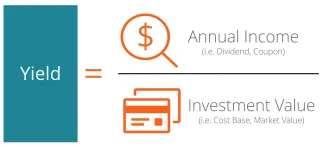
Understanding Investment Yield
Before I begin the topic of this month's newsletter, I wanted to let you know that the new First Home Savings Account (FHSA) is now available at Aligned Capital. For the average Canadian maximizing this account could mean saving over $13,000 in taxes all while providing a tax free down payment on a home of over $40,000. If you've wondered whether this account is right for you (or someone you know) and are looking for guidance, please reach out and let me know - I'd love to be able to help!
Now onto the topic for this month - understanding yield of your investments. There are probably two different ways investors think of yield from their investments, dividends - and in the case of mutual funds or ETF's - distribution yield. Investors will gloat that they found a fund or ETF that pays them a 10% or 15% dividend, but is that really the return they are receiving? Unfortunately only death and taxes are guaranteed, so what what is the question you really need to be focusing on?
That question is...
How sustainable is the dividend or distribution yield?
To understand this concept better I want to run through a very simple example. Imagine you and your friend run a business as equal partners, and for the last 5 years you have generated $100k in profits every year. The business has $500k in cash that has built up over the years, and now you decide you want to payout $100k/year as a fixed distribution out to the shareholders (you and your friend).
Unfortunately, however, the business falls on hard times and over the next 2 years the business actually loses $100k/year. Because you were losing $100k/year, along with paying out a dividend of $100k/year, The $500k in cash that was built up inside the business all of a sudden dries up and on year 3 you only have $100k in cash left. If the business loses another $100k this year, there are no funds left to make that distribution you and your business partner agreed to, so you have a couple options. You can cancel the dividend payment, reduce it to something you think is more manageable, or borrow money (use debt) to fund the dividend. In all these scenarios, your business doesn't look very solid.
This concept is the exact same principle you can apply to a dividend paying stock, a dividend ETF or mutual fund, or a high distribution yield ETF or mutual fund.
Let's look at an example below - this is not a recommendation in any way, it is meant to illustrate that investment yield does not always translate into total return.
Horizon's Canadian Oil & Gas Covered Call ETF - (ENCC.TO)
The annualized distribution yield on this ETF is 14.17%, and holds Canadian oil and gas companies. Does this mean that the investment has earned investors an annualized return of over 14% since inception? Of course not.

As you can see from the chart above, the return on this ETF since it's inception in 2011 has been -32.17%, or a compounded annual return of -3%. Definitely not the 14% annualized yield.
This is just one example of the yield/dividend not being indicative of the performance you may receive when owning one of these products. That's why the most important questions to be asking are "how sustainable is this dividend or distribution yield?" or "is the business growing faster or generating enough cash to cover the dividends?" or "is the strategy of the EFT/mutual fund sufficient to cover the distribution"?
If you have any questions on this concept, please let me know as I'd love to answer them.
Best,
Jon

Jonathan Adomait
Financial Advisor | CFP, CIM, B.Eng

